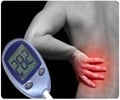Disparities in sports participation exist due to fewer opportunities and less social support for girls.

Modeling Health and Economic Outcomes of Eliminating Sex Disparities in Youth Physical Activity
Go to source) This study, led by researchers from the Center for Advanced Technology and Communication in Health (CATCH) at the CUNY Graduate School of Public Health and Health Policy (CUNY SPH) and the National Institute on Minority Health and Health Disparities (NIMHD), contributes to the growing body of evidence suggesting that targeted interventions can have a profound impact on the health of future generations while also alleviating financial burdens on healthcare systems.
‘Why the gender gap in #fitness? New research reveals surprising disparities in #physical_activity levels between young men and women. Let's break down these barriers together!’





Disparities in Physical Activity and Sports Participation
For example, only 15% of female participants in grades nine to 11 as compared to 31% of their male counterparts met aerobic guidelines, as shown by the 2011-2019 Youth Risk Behavior Survey. There are even greater disparities in sports participation. A 2019 study found that 54.1% of female participants as compared to 60.4% of male participants participate in sports.To simulate what would happen if these disparities were reduced to different degrees, CATCH and NIMHD researchers decided to utilize a computational model of all the youth in the U.S. The computer simulation model represents all the six-to-17-year-olds in the U.S. as virtual agents starting with different ages in the model, and then simulated the daily physical activities of each youth, their growth, the impact of the physical activity on their health, the different chronic medical conditions that could emerge, and the resulting costs over time.
“This study shows how eliminating sex disparities in physical activity and sports would not only be the fair thing to do, it would also be economically beneficial for society,” explains Bruce Y. Lee, MD, MBA, the study’s senior author and professor of health policy and management at CUNY SPH. “Eventually efforts to increase physical activity and sport participation for girls and women could end up paying for themselves and more.”
While there are different potential ways of reducing sex disparities in physical activity, reducing sex disparities in sports participation may be the easiest and most effective way. Sports-related interventions have clearer implementation locations such as schools and athletic associations, along with additional funding pathways apart from school budgets (e.g., recreation centers, community partners, and more).
The Public Health Informatics, Computational, and Operations Research (PHICOR) team that is the core of CATCH has been part of the Aspen Institute’s Project Play since 2016. Project Play has made ongoing efforts to reduce sex disparities in sports participation such as developing a Youth Sports Playbook that indicates a number of interventions that can get more female youth playing sports, including encouraging sports sampling, revitalizing in town leagues, carving out time at fields and gyms during prime hours each week for kids to engage in pickup or free play in their neighborhood, and recruiting female coaches who can serve as mentors and role models.
Advertisement
Reference:
- Modeling Health and Economic Outcomes of Eliminating Sex Disparities in Youth Physical Activity - (https://jamanetwork.com/journals/jamanetworkopen/fullarticle/2827024)















